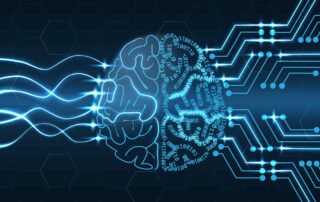Trent McConaghy
More from this author
Tokenize or die: Will industry giants be forced to dilute their power?
For how much longer will companies like Facebook, which reported Q1 revenue this year of $11.97 billion, be able to retain a business model that capitalizes on free content generated by its users without rewarding them for it? Is it much of a stretch of the imagination to see it aligning its interests with that of its users instead of being in conflict with them?
Token Engineering Pt III: Analysis of Bitcoin, design of Ocean protocol
In this Part III of token engineering, Trent McConaghy puts the tools we familiarized ourselves with in the last installment to help analyze existing tokenized ecosystems, and design new ones. This article will do just that with the analysis of Bitcoin, and the design of Ocean Protocol.
Token engineering Pt II: Methodology, patterns and tools
In Part II of three on "How do we design tokenized ecosystems?" Trent McConaghy takes us through an explanation of the practice of engineering the theory, practice and tools to analyze, design, and verify tokenized ecosystems
Token engineering Pt I: Incentivizing humans with machines
This Part I of a three part series looks at the possibilities of blockchain as a trust and incentive machines and the cross-section with artificial intelligence.
Starships and Tokens; A Path to Human Self-Actualization
Many humans don’t settle for just barely scraping by; they improve themselves towards self-actualization. Could we do the same at the level of civilization? Rather than merely avoiding disasters, let’s truly reach for the stars. In this essay, I describe a decentralized system for humanity to collectively graph the steps towards self-actualization, from conquering malaria and a shared planetary database, to universal basic income and even asteroid mining.
Stateless & Stateful Smart Contracts: Lessons in flexibility, scale, and security from digital circuit design
Smart contracts are part of the blockchain zeitgeist. And with reason: they are unlocking many useful applications. I’m writing this post to clarify that there are really two types of smart contracts: stateful smart contracts are the most flexible; stateless smart contracts have better scale and security.
From AI to Blockchain to Data: Meet Ocean
I think it’s amazing that you can design algorithms that might have society-level impact. AI algorithms are in that category. And, AI is *fun*. Take Genetic Programming, where you write computer programs to evolve other computer programs. Moreover, AI poses exciting engineering challenges like scaling, and it asks the biggest questions, like the nature of the mind. For these reasons, AI was my first love. I started my AI reading and hacking intently in the early 90s. By 1997, I was far enough along hacking AI that people started paying me to do it. I never looked back, doing two companies and a PhD on AI.
The blockchain infrastructure landscape: A first principles framing
How are Ethereum, IPFS/Filecoin, and BigchainDB complementary? What about Golem, Polkadot, or Interledger? I often get questions like this. So, I decided to write about how I answer those questions, via a first-principles framing. The quick answer: there’s no one magic system called “blockchain” that magically does everything. Rather, there are really good building blocks of computing that can be used together to create effective decentralized applications. Ethereum can play a role, BigchainDB can play a role, and many more as well. Let’s explore…
Tokenize the enterprise …And melt it into the community. Rinse, Repeat.
Tokens are the new “new” thing in the blockchain space. Just when everyone thought that blockchains were hot enough, everyone realized that tokens *are* the business model for Web 3.0.
Three pre-blockchain planetary networks: Visa, DNS, and Sabre/Amadeus
“Blockchain technology could change the world!” But how? If an industry gets a single shared source of truth, what happens? If you’re in the blockchain space, you may be working hard to paint a possible picture to answer that. You may be using logic and extrapolation, but wishing that you had something more tangible.









